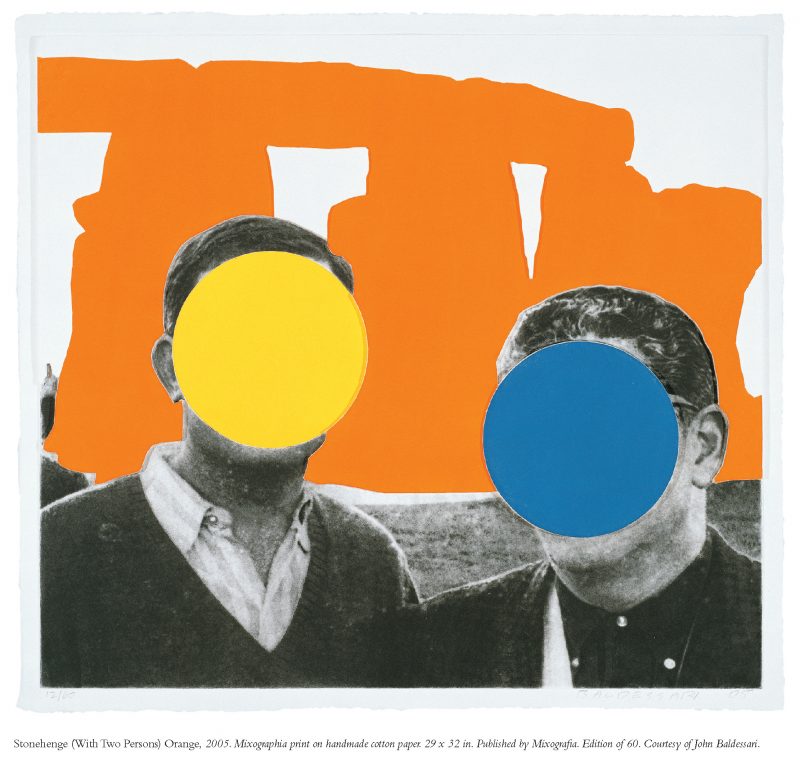In the late 1960s, John Baldessari cremated all the paint works he had produced between 1953 and 1966. He announced the event to a journalist so the world would know that he had stepped outside the confines of artistic tradition. Soon after, he began rooting around in Dumpsters for found imagery (newspapers, movie stills, advertising posters) and collaged these visuals with found written texts (broken signs, ripped newspaper headlines) in a way that offered a plurality of narratives—questioning just how relative our ideas of meaning can be.
Based in California for most of his life—save a decade-long hiatus in New York in the ’60s—Baldessari has always delivered a gently caustic sense of humor in his work. Like Warhol’s or Ed Ruscha’s, Baldessari’s understanding of the visual language of communication on a major scale—or, more specifically, advertising—has allowed him to simultaneously subvert and worship the bright colors and smirking politicians that surrounded him every day. On the phone from his studio in Venice, L.A., Baldessari’s voice is so deep and rumbling that it’s sometimes hard to make out what he’s saying. He said he was used to repeating himself.
—Eleanor Morgan

I. THE IMAGING OF PEOPLE
THE BELIEVER: Is it fair to say that in the beginning of your career you were trying to break certain gallery taboos?
JOHN BALDESSARI: I had a few battles there, yeah. But it certainly is true: I wanted to challenge, and ultimately break, all these taboos that art galleries had at the time. You never saw photographs in art galleries— they were always in photo galleries. So I wanted to make photography a tool that artists can use, as opposed to something they can only, well, look at.
BLVR: You did the same thing with introducing text into your work.
JB: Absolutely. I became very interested in the prospect of using language as a tool for art, and informing the work in a different way. It wasn’t just about the visual appearance of the language, either. It was about giving a different platform for understanding the work. Most of the text was “found,” as well—broken signs, segmented newspaper headlines, things like that. I just appropriated bits of it and gave it a different course.
BLVR: Were there any artists whose work with text had informed you?
JB: Picasso was the main one. But Lichtenstein and Braque did it for me, too.
BLVR: You abandoned painting quite early in your career and cremated every piece of painting work you ever made. Can you tell me a bit about this?
JB: Oh god. I was drowning in paintings by the ’70s and becoming more and more doubtful that painting was the only true way to do art....
You have reached your article limit
Sign up for a digital subscription and continue reading all new issues, plus our entire archives, for just $1.50/month.
Already a subscriber? Sign in




